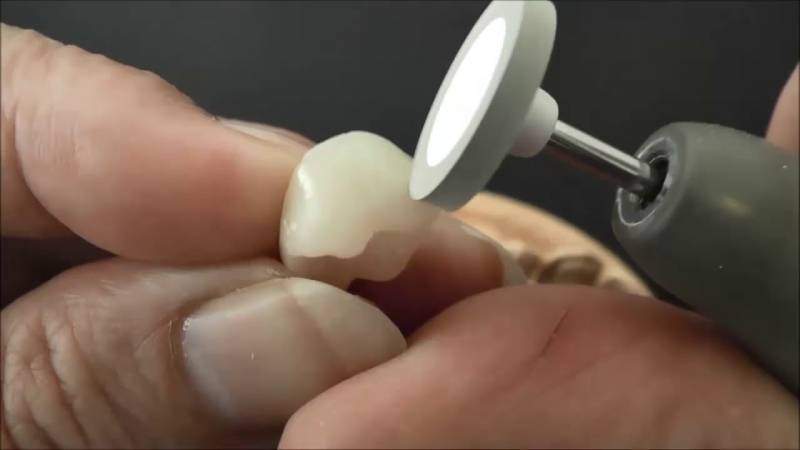Achieving Flawless Ceramic Restorations: A Guide to Using Ceramic Polishers: As a result of its realistic appearance, strength, and longevity, ceramic restorations are becoming more and more common in the area of dentistry. Ceramic materials offer great aesthetics that flawlessly merge with the native dentition whether they are used for dental crowns, veneers, or inlays. However, the correct use of ceramic polishers is crucial to obtaining faultless ceramic restorations. This article will discuss the significance of ceramic polishers and offer practical advice for using them effectively.
Polishing ceramic restorations requires the use of specialized tools called ceramic polishers. They are often constructed from a substance that has been impregnated with diamonds or a fine abrasive material that helps polish and refine the ceramic surface. To meet varied restoration kinds and contour regions, ceramic polishers are available in a variety of sizes and forms, including cups, discs, and points.
Achieving a flawless ceramic restoration
The correct contouring and shaping of the restoration itself is the first stage in producing a faultless ceramic restoration. The restoration should now be appropriately shaped before beginning the polishing procedure. It is essential to carefully clean the repair surface to get rid of any impurities or dirt before utilizing ceramic polishers. This can be accomplished by using a moderate detergent or specialized cleaning solution while washing the restoration with water.
When utilizing ceramic polishers, it’s crucial to use mild pressure and move slowly and deliberately. Over-pressurization can cause overheating, which could harm the ceramic surface. To prevent producing uneven surfaces or rough patches, keep the polishing tool moving in a regular rhythm.
For particular phases of the polishing process, different types of ceramic polishers are created. To eliminate any surface imperfections or rough regions, coarser ceramic polishers are first employed. To achieve a smoother and more polished surface, finer ceramic polishers should be used as the polishing process advances. To get the best results, it’s crucial to use polishers in a progressive order, working from coarsest to finer.
To avoid overheating and to improve the polishing action, water or a cooling agent should be used during the ceramic polishing procedure. This reduces the possibility of damaging the ceramic restoration and controls heat generation. Debris removal and maintaining a clean polishing surface are also made easier with the use of water or a cooling agent.
The ceramic restoration must be regularly inspected while being polished. Dentists should regularly inspect the restoration in good lighting to find any last-minute flaws or inconsistencies. To reach the appropriate level of smoothness and luster, more polishing may be required, if necessary.
To preserve the longevity and efficacy of ceramic polishers, proper maintenance, and care are essential. Ceramic polishers should be carefully cleaned and maintained in a clean, dry area after each usage. It should be regularly inspected to look for any signs of wear or damage. To ensure ideal results, a ceramic polisher should be promptly replaced whenever it starts to wear out or lose its polishing effectiveness.
Bottom Line
Finally, expert ceramic polisher use is necessary to produce faultless ceramic restorations. These specialized tools are crucial for smoothing out imperfections on the ceramic surface and producing a finish that looks natural. Dental professionals can guarantee great outcomes and patient happiness by adhering to precise procedures, employing the proper order of polishers, and properly keeping the tools. In the quest to produce stunning and durable ceramic restorations, ceramic polishers are priceless tools.
